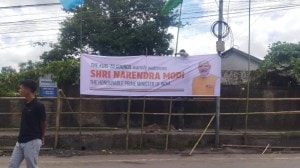Click here to follow Screen Digital on YouTube and stay updated with the latest from the world of cinema.
Unfolding the secret behind Raanjhanaa’s success
<i>Raanjhanaa</i>'s small town romantic tragedy appeals to youngsters as much as a romantic comedy set in metros
That Raanjhanaa has garnered good box-office collections is because these films find a resonance with the youth,particularly in small towns around the country who understand the tragedy of thwarted possibilities
Raanjhanaa,among recent films has been the proverbial dark horse. I watched it belatedly with a degree of apprehension and finally,came away nodding in agreement with critics who had given it a thumbs up. First,the good news director Anand L. Rais hatke love story set in the holy city of Varanasi with its teeming ghats,mandirs where gods live cheek by jowl with multitudes,does a fine job of weaving the schizophrenic complexities that mark small towns.
For starters,the discomfort of Hindus and Muslims,who otherwise co-exist in perfect harmony at the idea of their young ones,getting married to one from the other side. Religion of course,as a roadblock is interchangeable with class,caste or any other. And then again,being well educated does not sit at odds with trying to get daughters married against their wishes! The small town mentality,you see,is nothing if not as complex as the maze-like gulli-kuchas that abound in these cities.
No wonder that some of our most celebrated tragic heroes and heroines,both literary and filmic,spring out of these unexpected quarters Devdas and Choti bahu of Sahib Biwi Aur Ghulam being a few examples.
Besotted lovers,who think little of stalking their love interest or slitting wrists to prove the intensity of their feelings,are a dime a dozen in mofussil towns,stemming from the conservative code of conduct that prevails. In cities where any display of affection outside the familial is frowned upon,with interaction between girls and boys really few and far between romantic love and the expression of it finds surreptitious outlets. Often with dreary outcome. Not all romances end in death and destruction,some are just nipped in the bud when one of the pair is forcibly married off but most of them do end up in heartbreak.
Both Kundan and Zoya are separated as much by their insular small-town worlds,which do not allow room for those with different social identities as they are by their personalities as different as chalk and cheese.
By sending her away from Kundan on the pretext of educating herself, Zoyas parents actually release her from the shackles of the small-town mentality. Ironically,in doing so,they separate her not only from the stilted,caught in a time warp world that he represents,but even their own bigoted reality.
And towards the end,so does Kundan,though fleetingly. In Delhi he flowers when he finds an environment that encourages his intuitive leadership skills,and is even able to redeem himself even if it is a little too late.
That Raanjhanaa,quite like last years Ishaqzaade,has garnered good box-office collections is because these films find a resonance with the youth,particularly in small towns around the country who understand the tragedy of thwarted possibilities. Or the pain of unavoidable heartbreak.


Photos


- 01
- 02
- 03
- 04
- 05






























